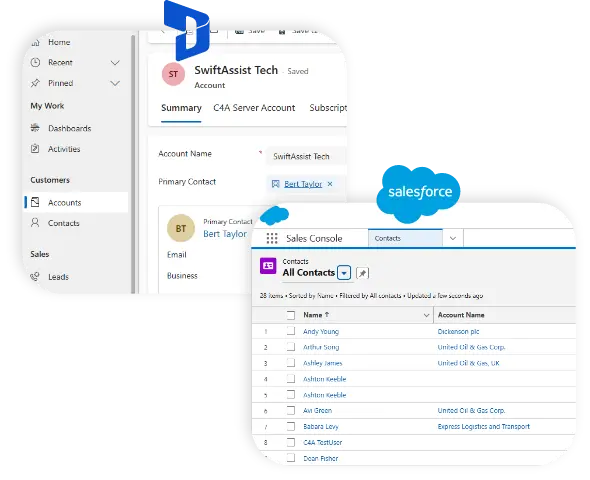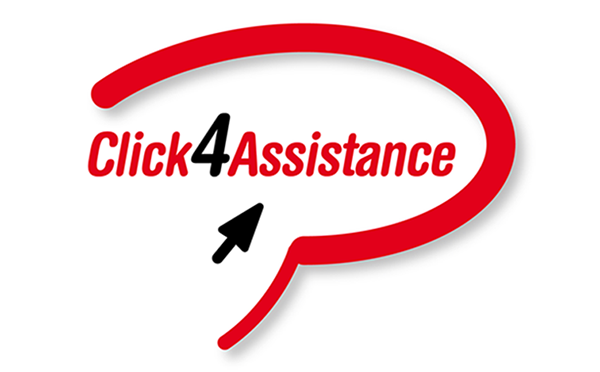9 technology insights to help your business thrive in 2025

Discover the innovations set to change the business world in 2025, including advanced AI, the rise of edge computing, and challenges in selecting solutions that will have beneficial corporate outcomes.
2025 looks set to be another year when technology dominates the business landscape. New developments will enable firms to operate more productively, allowing them to do more with fewer inputs.
But which technologies should you be keeping an eye on going forward? Fortunately, this article can help. It runs through the nine key trends expected to transform the business world over the coming twelve months, giving you the jump on the game.
Unified Data Processing And Visualisation: Enterprises Need A Single Source Of Truth
Unified data processing and visualisation are likely going to come to the fore over the coming months. Companies need better tools that allow them to aggregate their information into a single dashboard instead of disparate silos.
The old approach was to move data to a central database by copying, pasting, amending, and duplicating. However, these strategies were infeasible for many businesses, simply because of the complexity of implementing them.
For this reason, many technology providers are now developing “zero-copy” strategies to help companies. These allow analysts to evaluate the data at its source instead of through intermediate apps that require periodic, manual updates.
Part of the drive toward unified data processing is a desire for more unified governance. Companies want more effective procedures that reduce the risk of data fragmentation and centralise security into a single hub to prevent breaches.
Around 47 percent of companies are following these strategies while 80% are still struggling to unify. So, how can your firm implement unified data processing and visualisation? Here are some pointers:
- Implement data architectures that permit a “single point of truth” and evaluation
- Adopt governance structures that determine who can access company data, from where, and for what purposes
- Ensure security is up to scratch and able to strengthen data protection when moving to a unified internal service
Zero Trust And Mesh Architectures: Companies Should Adopt AI for Enhanced Security And Performance
Zero trust and mesh architectures are another emerging theme for 2025. These approaches reduce cybersecurity risks and help businesses deal with human error.
This new technology is an outgrowth of the recent, impressive developments in AI. Network managers are finding that they can integrate artificial intelligence with their zero trust and mesh architectures, reducing the risk to their operations.
For example, AI-enabled security strategies are becoming commonplace. Businesses are using them to identify possible vulnerabilities and manage them more effectively. AI is also involved with network monitoring, especially in hybrid working environments where employees use network-connected terminals outside of controlled office buildings. The hope is that over the next twelve months, businesses can use artificial intelligence to improve zero-trust architectures, allowing them to protect their critical systems.
Your enterprise can implement improved, AI-driven zero trust and mesh architectures by:
- Transitioning existing systems to zero trust and mesh architectures
- Using emerging AI-based defensive capabilities in anti-virus software and network monitoring
- Build out a zero-trust framework that customers trust and that passes regulatory scrutiny
Cloud Efficiency Push: Enterprises Must Use Economising Strategies To Reduce Distributed Computing Costs
Unfortunately, many enterprises fear that the cost of cloud services will rise in 2025 due to increasing service demand. Unless providers can scale in line with demand, costs will rise faster than inflation.
For this reason, many companies will transition to cost mitigation and management strategies. These will aim to lower expenses while maintaining a high quality of service.
This process will likely begin internally. Enterprises will perform more cloud spending audits to understand where revenue is going. Companies will also look for advanced external solutions, like edge computing and bringing more processing power closer to the business. Single-vendor solutions may benefit if it means bundling services and server usage into a single monthly payment.
Whether enterprises can do more than this to reduce their costs remains to be seen. Chip shortages could push up prices or delay the introduction of new data centers while advances in AI could see demand from that sector jump even higher.
As a business, what can you do to improve your cloud strategy? Here are some ideas:
- Modernise and consolidate your cloud infrastructure, using a single brand if necessary
- Implement strategies to reduce your reliance on cloud data processes without harming the quality of your operations
- Use advanced strategies, like edge computing, if you feel they will let you lower costs overall
AI Chat Software: Companies Will Use Bots To Improve Outreach And Customer Service
AI-based live chat software for website owners is also likely to see significant improvements over the coming months. Enhancements in technology will make 2025 the year to watch for tools that will enable greater outreach and market penetration.
AI chatbots are already in high demand because of their ability to greet customers on multiple channels, including branded websites. These apps can respond to natural language, like advanced LLM-based models, and provide meaningful assistance to customers requiring information or help with what to do next.
Currently, businesses are operating a triage model, forwarding users to these bots and then escalating to human agents when necessary. However, 2025 may be when these systems can offer personalised guidance of their own, permitting seamless assistance twenty-four-seven.
As a business owner, I use chat software for my website. But how should you implement it?
- Find a company, like Click4Assistance, that provides integrated AI chatbot solutions with the latest technology and functionality
- Decide how to restructure your customer service team so that you can pass users through the bot first to collect information and then escalate if necessary
- Look for ways to integrate chatbots into an omnichannel, multi-platform approach, allowing prospects to contact you at any time for guidance and information
Using AI To Build: Companies May Reduce Their Reliance On Buying In Services
The “build or buy” dilemma is also likely to go up a notch in 2025 due to the increased efficacy of artificial intelligence. Companies using generative technology may consider whether generic prompts could generate code for the solutions they require better than conventional external developers or products.
Traditionally, companies with engineering strength relied on vendor solutions to provide the software they required. External experts could build the systems they needed, perhaps adding helpful customisations and integrations where necessary.
However, generative AI is disrupting the field, leading many firms to develop solutions independently. Throughout 2025, more firms will use advanced artificial intelligence systems, like ChatGPT, to build programs and apps that streamline their workflows. These are often ready to implement in a few hours instead of weeks or months.
AI could also help with tangential costs associated with using vendor systems, like testing and debugging. These services are essential for enterprises wanting to implement bespoke solutions quickly without high costs.
Here are some of the ways you can use AI to build your business’s software stack:
- Only use AI to build non-vendor solutions if they will offer you a significant competitive advantage
- Weight the costs of in-house generative AI development against off-the-shelf vendor options
- Determine whether your organisation has the right mix of people to “build” instead of “buy”
Autonomous Agents: The Future Of AI Development
The year 2025 will also likely mark the introduction of autonomous agents. Unlike current systems, these exhibit “agency,” meaning they can perform tasks of their own volition.
The primary role of these agents is “decision-making.” Instead of providing information and referring to a human, these bots take action without any instruction if they believe it will attain the enterprise’s ends.
Interestingly, the goal of autonomous agents isn’t to remove humans from the loop. Rather, engineers see this advancement as a way to find a better balance between staff involvement and robot automation. Sometimes, machines simply have more data available to make better decisions.
Of course, autonomous agents will require close supervision throughout 2025. Enterprises will need to train staff how to take care of them and ensure they don’t work against the business’s interests. But it is an exciting development nonetheless.
Here are some ways your organisation could implement autonomous agents:
- Ensure that your agents have “explainability” where you can determine a rationale for their choices
- Define governance and oversight rules to ensure agents do not behave unethically
- Make investments in the types of agents that can make decisions most relevant to your firm
Edge Computing: Using Environmental Computing To Deliver More Data
2025 may also see the rise of edge computing. Companies want to leverage sensors in the environment, like mobile phones and RFID chips, to support immediate decision-making. Real-time data collection could potentially enhance competitiveness.
Industries currently interested in edge computing include manufacturing, healthcare and retail. Putting sensors in the environment and linking them to central databases for evaluation can lead to improved patient care, logistics monitoring, and supply chain management.
While the IoT is unlikely to explode next year, the concept of edge computing is gaining ground, and more firms are interested in it. Companies want to eliminate issues with legacy systems and focus on highly-compatible approaches that work. Bringing together sense data from the environment may help firms make better decisions and do right by their customers.
But how can you implement this approach in your business:
- Consider why you might need edge computing and how leading competitors in your industry are already leveraging it for their competitive advantage.
- Think about how you will manage your edge computing operations and ensure security
- Perform a cost-benefit analysis of the total cost of edge computing, including device purchase and maintenance
Additional Automation: Reducing Rote Tasks
The growth of “hyper-automation” is another trend expected for 2025. Companies are likely to take software processes to the next level by integrating more advanced AI and machine learning into their processes.
Hyper Automation is taking numerous forms including machine learning for data entry, bots that can type word documents in real-time, and systems for feeding emails to staff at opportune times.
The benefits of next-generation automation are substantial. For example, companies can expect less staff burnout, high efficiency, and lower operational costs. While competitors are wasting wages on rote tasks, industry-leading organisations will be investing in strategy and creative problem-solving.
The hyper automation expected for 2025 will still rely heavily on organisational data robustness. Enterprises will need mountains of data to draw meaningful, productivity-enhancing insights. However, those using advanced technologies, like vector databases and “data lakes” are more likely to succeed.
Here’s how to implement additional automation in your organisation:
- Keep a human in the loop to provide essential oversight over new systems
- Prioritise automation efforts on your most time-consuming tasks
- Ensure you have the data in place to facilitate wholesale automation of various aspects of your business
Sceptical Purchases: Checking Innovations Match The Hype
Since 2022, the technology market has been in an extraordinary hype cycle, with many commentators making incredible claims about what is possible. For this reason, enterprises must be careful. Getting caught up in the excitement could lead to poor decision-making.
According to surveys, around 82% of C-suite executives plan to increase spending on AI-related tools in 2025, up considerably from the 70% thinking about it in 2024. However, rapid adoption of the technology could bypass conventional vetting procedures, leading to poor-quality outcomes. AI isn’t a magic bullet and will still require careful deployment throughout 2025 (until it becomes more advanced).
For companies, the main challenge will be striking a balance between the need for AI adoption and effective implementations. Zealously applying technologies to business processes could lead to lower productivity, inefficiencies, and poor customer service.
So, how can you be sceptical of AI innovations while investing in the technology you need?
- Develop a protocol for evaluating AI solutions to see whether they meet your internal requirements across metrics like time-saving or customer satisfaction enhancement
- Anticipate the risks likely to emerge from AI and how you will manage them
- Discuss the return on investment of each AI-based product you select and whether it meets your business’s needs. Determine how you will measure value after installation to calculate the economic impact.
Wrapping Up
Nobody knows exactly what technology 2025 will bring to businesses. However, the picture is one of increasingly powerful AI and automation, including chatbots. Whether organisations succeed in lowering their costs and improving productivity will depend on how well they understand the innovations coming down the pike, and how comprehensively they implement them.

























